
Three Bridges Station looking north before the station was enlarged
From 1823 numerous schemes were put forward for a railway between London and Brighton. By 1836 two were being considered by the House of Commons Committee: Sir John Rennie's Direct Route and Robert Stephenson's, via the Mole and Adur Gaps. Rennie's Direct Route was chosen, and the London and Brighton Railway Bill received Royal Assent under 1 Vic. Cap. 119 on 15th July 1837.

Three Bridges yard opposite the Fox Inn
The London and Brighton was forced to share their line into London with the South Eastern Railway from Redhill, joining the London and Croydon Railway at Selhurst, which in turn joined the London and Greenwich Railway at Corbett's Lane, with a terminus at London Bridge. Branches to Shoreham and Newhaven were included in the Bill. The Brighton to Shoreham branch opened first on Tuesday 12th May 1840. The line from the junction with the London and Croydon Railway to Haywards Heath opened on Monday 12th July 1841, with intermediate stations at Croydon, Godstone Road (Purley), Stoat's Nest (Coulsdon), Merstham, Redhill and Reigate Road, Horley, Three Bridges, Balcombe and Haywards Heath. The Haywards Heath to Brighton section opened on Tuesday 21st September 1841.
The London and Brighton, London and Croydon, Croydon and Epsom, Brighton, Lewes and Hastings, and Brighton and Chichester Railway companies amalgamated on 27th July 1846 to form the London, Brighton and South Coast Railway (LB&SCR).
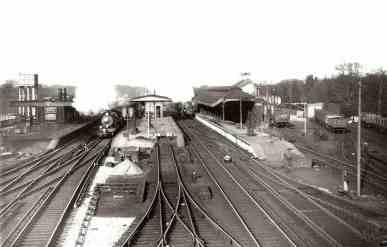
Three Bridges Station looking north after the station was enlarged
Gatwick Racecourse opened in March 1891, the owner paying £5000 to the LB&SCR to build a station there. Widening of the Brighton line included doubling the line from two to four tracks between Earslwood and Three Bridges, which was completed in 1907.
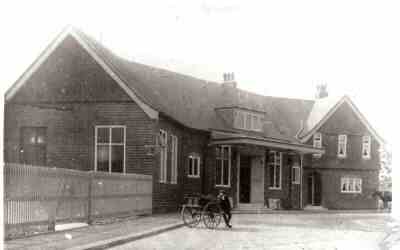
The new stationmaster's house and booking hall
In 1914 Herbert Brooker murdered a woman between Horley and Three Bridges, where he was arrested.
The LB&SCR, together with the London and South Western Railway (L&SWR) and the South Eastern and Chatham Railway (SE&CR) became a part of the Southern Railway from 1st January 1923. The Southern Railway inherited three different electrification schemes from its predecessors (although the SE&CR's scheme had not been implemented), but adopted the L&SWR's third rail system as the standard.
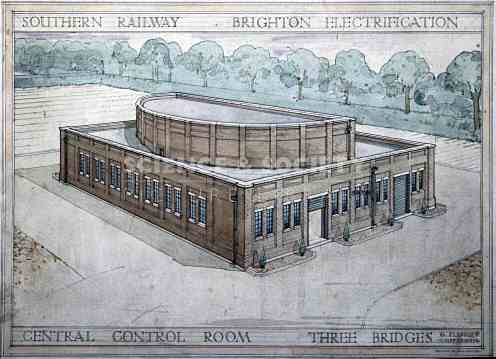
Three Bridges Central Control Room
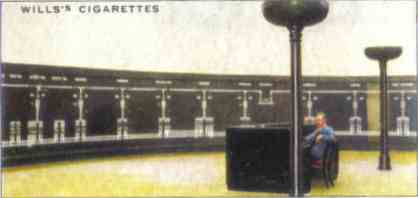
Three Bridges Central Control Room
A new station, Tinsley Green, was opened on 30th September 1935 to serve Gatwick Airport, the owners paying £3000 to the railway company towards the cost. The official opening of the new airport was on Saturday 6th June 1936, the station having been renamed Gatwick Airport on 1st June 1936. In the 1950's Gatwick was selected as the site of London's second airport, and a new airport was built on the site of the racecourse. The original racecourse station was rebuilt to serve the new airport, and was constructed by James Longley & Co., who had built the 1891 station. Services began on 28th May 1958, and the airport was officially opened by the Queen on Monday, 9th June 1958.
In the meantime, the railways were nationalized and the Southern Railway became a part of British Railways from the 1st January 1948. The Gatwick Express, a dedicated service between Gatwick Airport and London Victoria, was inaugurated on 14th May 1984. The original station buildings, which were on the east side at the same level as the railway and reached via a road called Station Hill, were demolished in May 1985, despite attempts to have them listed.
Three Bridges train care depot depot, built by VolkerFitzpatrick for Siemens and Govia Thameslink Railway, was opened by Transport Secretary Patrick McLoughlin on Thursday 15th October 2015.
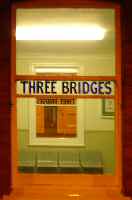
The London to Brighton Line 1841-1977. Adrian Gray (The Oakwood Press, 1977)
Three Bridges to Brighton. Vic Mitchell and Keith Smith (Middleton Press, 1986)
East Croydon to Three Bridges. Vic Mitchell and Keith Smith (Middleton Press, 1988)
The Quadrupling of the Brighton Main Line. The Brighton Circular, Volume 27 No. 4, Winter 2001
Rebuilding Three Bridges Station. The Brighton Circular, Volume 29 No. 3, Autumn 2003
The Horley-Balcombe Widening. The Railway Engineer, November 1906
Murder on the Brighton Express. The Brighton Circular, Volume 27 No. 3, Autumn 2001; No. 4, Winter 2001; Volume 28 No. 1, Spring 2002
Southern Electric. G.T. Moody (Ian Allan, 1957)
The First Main Line Electrification in England. The Railway Gazette, 22nd July 1932; 30th December 1932
Three Bridges to Horsham
The line to Horsham was authorized on 21st July 1845 (8 & 9 Vic. Cap. 113) and opened on 14th February 1848. The original single line was doubled, and the wooden viaduct across Ifield Millpond replaced by an embankment and bridge in September 1861. After years of complaints, in 1892 a pedestrian subway was built under the railway line at Crawley Station, and about the same time a bridge was erected linking East Park with Station Way. The subway was closed in 1978 when the crossing gates were replaced with lifting barriers, but the bridge is still in use. A new station was opened on 1st June 1907, originally named Lyons Crossing Halt, it was renamed Ifield Halt shortly afterwards.
The Three Bridges to Horsham and Littlehampton line was electrified, and public services started on 3rd July 1938. A new station with offices was built at Crawley to the west of the original station, which was adjacent to the High Street. The new station opened on 28th July 1968, and the original station demolished in the same year. The signal box is is Grade II Listed (1983) and is in the care of the Crawley Signal Box Preservation Society.
The London, Brighton and South Coast Railway: Volume 1. Origins and Formation. John Howard Turner (Batsford, 1977)Crawley to Littlehampton. Vic Mitchell and Keith Smith (Middleton Press, 1986)
Southern Electric. G.T. Moody (Ian Allan, 1957)
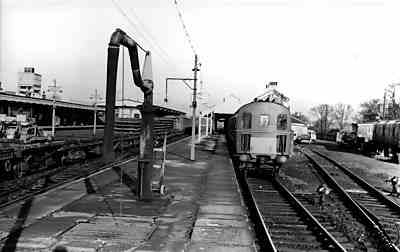
Three Bridges bay platform on the last day of service to East Grinstead
The East Grinstead Railway was authorized on 8th July 1853 (16 & 17 Vic. cap. 88). The line opened on Monday, 9th July 1855 and was worked by the LB&SCR, who finally purchased the line on 1st January 1865. In March 1963, Dr. Richard Beeching proposed the line's closure, and, despite opposition, the last train ran on Sunday, 1st January 1967. Worth Way, a public path following the route of the railway, was opened in July 1979.
The London, Brighton and South Coast Railway: Volume 2. Establishment and Growth. John Howard Turner (Batsford, 1978)Branch Lines to East Grinstead. Vic Mitchell and Keith Smith (Middleton Press, 1984)
